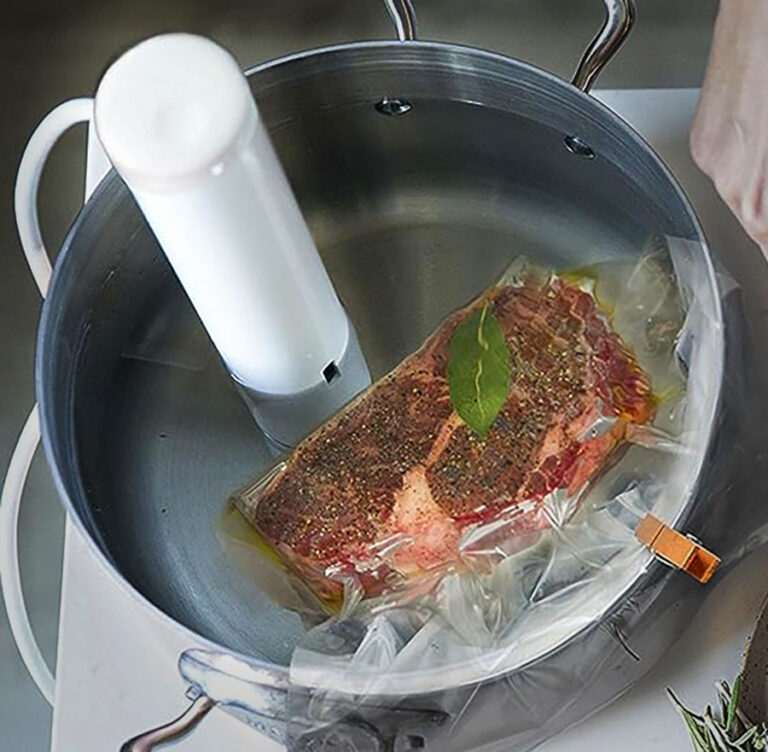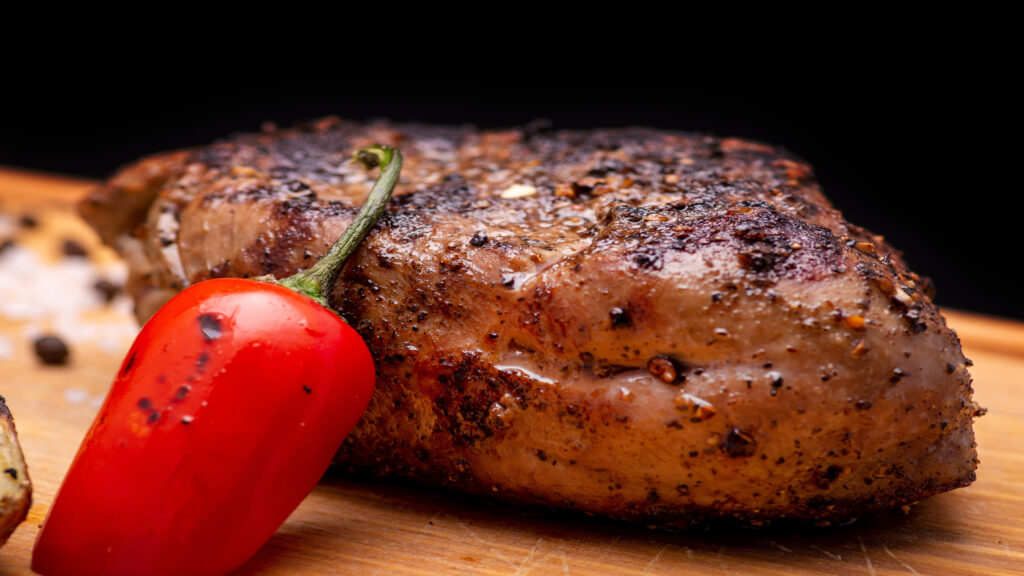My Love Affair with Sous Vide Cooking: A Blind Cook’s Perspective
As I place my hand gently on the counter, I feel the cool metal of my latest culinary gadget, the Breville Joule Turbo Sous Vide Cooker. A sense of anticipation tingles at my fingertips. I am a blind man, but sight is not necessary to the fervor with which I pursue my passion for cooking.
Sous vide cooking, a method that involves vacuum-sealing food in a bag and cooking it to a precise temperature in a water bath, allows for cooking perfection, the consistent results unachievable by traditional methods. And it’s this technique I’ve dived into, navigating as a blind man the subtleties of heat, time, and texture.

My adventure into the realm of sous vide cooking began modestly with the purchase of an Anova Sous Vide Cooker. Paired with a trusty old pasta pot, I plunged into this exciting method of cooking that was as much about creativity as it was about taste.
With the introduction of the Breville Joule Turbo Sous Vide Cooker, my gastronomic expedition has taken a thrilling turn. Its Autopilot feature, accessed through the Joule App, provides guided recipes and removes the guesswork from cooking. Turbo technology allows me to prepare certain dishes in half the time of traditional sous vide cooking, while Primetime gives me the flexibility to serve my meals when I’m ready.
Unboxing this device as a blind person presented no difficulties. I was able to identify each part by touch and plug the cooker into the wall with ease. Pairing the Joule Turbo Sous Vide Cooker with the Breville Joule app was also a seamless process. While the initial setup was straightforward, I encountered a few stumbling blocks when navigating the app, particularly while searching for recipes and setting the unit. Having used the same app with my Breville Smart Air Fryer Oven, I noticed the controls for the Sous Vide Cooker were slightly different. Rest assured, I am eager to discuss these accessibility issues with technical support. Nonetheless, these minor hitches wouldn’t deter me from recommending this wonderful gadget.
The precision that sous vide offers is truly remarkable. As a blind man, I rely heavily on my senses of touch, smell, and hearing when cooking, not because they are amplified, but because I depend on them more than sighted people. Through touch, I can sense the perfect consistency of the proteins I cook, firm yet yielding, a testament to the sous vide process. While the appearance may not win beauty contests in the sighted world, the magic happens when these perfectly cooked foods meet the heat of my trusty Blackstone for a quick sear. The aroma that fills the air and the satisfying sizzle provide the feedback I need.
From grilling on my Traeger to smoking in my Masterbuilt Digital charcoal smoker, my culinary journey has been varied and rewarding. Each method carries its unique sensory signature—the smoky whisper of a slow barbecue, the sharp crackle of a steak on the grill, the subtle hiss of a low-and-slow smoked brisket—these sounds require no sight to be savored.
To share my sous vide experience in more detail, let me walk through cooking one of my favorite dishes – a perfect medium-rare steak.
Here is my step-by-step guide to cooking a sous vide steak as a blind chef:
- Gather the Ingredients and Tools:
- Steak of your choice
- salt
- pepper
- garlic powder or other seasonings
- fresh herbs like rosemary or thyme (optional)
- vacuum-sealable bags or resealable plastic bags
- a sous vide machine or immersion circulator
- large pot or container for the water bath
- Season the Steak: Place the steak on a clean plate. Feel the surface to ensure it’s dry, then liberally apply salt, pepper, and other seasonings, pressing gently to adhere. Repeat on the other side.
- Bag the Steak Using the Water Displacement Method: Place the seasoned steak in a resealable plastic bag. Partially seal the bag, then slowly lower it into the water bath, allowing the pressure to push the air out. Once most of the air is out, seal the rest of the bag.
- Prepare the Water Bath: Fill the large pot with water. Attach the sous vide machine or immersion circulator. Set the temperature to 130°F for medium-rare doneness.
- Cook the Steak: Once the water reaches 130°F, carefully lower the bagged steak into the water bath. Clip the bag to the side of the pot if needed. Cook for 1-2 hours depending on thickness.
- Sear (Optional): For a seared crust, remove the steak from the bag and pat dry. Preheat a pan over high heat, and sear 1 minute per side.
- Enjoy: Let the steak rest a few minutes, then slice and savor the tender, perfectly cooked meat.
Despite being blind, my culinary passion is uninhibited. I assess the tenderness of a steak through touch, pick out the right combination of spices by smell, and determine the perfect sizzle by sound. Yet, it’s the taste I relish the most—the myriad flavors that dance on my tongue. My inability to see the dish does not detract from the pleasure of eating; instead, it enhances it.
To all reading this, don’t let anything hold you back from pursuing your culinary dreams. With a bit of creativity and the right tools, anyone can become a master in the kitchen. Happy cooking!

